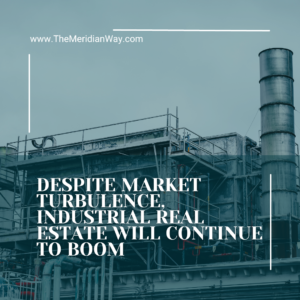 There has arguably never been a more robust year for industrial real estate.
There has arguably never been a more robust year for industrial real estate.
Construction companies completed 121.4M SF of industrial in Q3 2022, the second-highest quarterly total on record. Demand has more than kept up, and vacancy rates trended downward for the seventh straight quarter to a record low of 3.3%.
Though macroeconomic instability is affecting all aspects of commercial real estate, industrial space has proven to be a resilient asset class. However, no sector comes without its challenges.
Rising interest rates, pandemic-induced supply chain setbacks and inflation are worrisome to CRE professionals. As many believe the market is on the brink of a recession, the Federal Reserve announced another interest rate hike in mid-December, elevating rates to the highest they’ve been in 15 years. Labor shortages, material scarcity and price increases are also contributing factors to today’s industry concerns.
As the industrial sector navigates the challenges of a world changed by the pandemic, CRE firms have had to adjust their business strategies accordingly. Taking that into account, CORFAC International — a worldwide network of independently owned commercial real estate firms — expects to see continued strength into 2023.
“While activity may have cooled off slightly from earlier this year, industrial real estate is still in strong demand,” said Mason Capitani, managing partner of L. Mason Capitani/CORFAC International and 2022 CORFAC International president. “Though economic conditions are turbulent right now, professionals in the industry are proving to be adaptable and forging new industry trends.”
One way industrial professionals have been adapting to current supply and demand conditions is by searching for less-conventional spaces.
“Companies across the country are ‘settling’ for less-desirable properties due to supply shortages,” he said. “As a result, properties in secondary locations with fewer amenities continue to be occupied when they would most likely remain vacant in other market cycles.”
Largely due to the pandemic, supply chain disruptions have spurred demand for such industrial properties, he said. At the same time, the supply of industrial property is having difficulties keeping up with demand.
Joe Santaularia, senior vice president and managing partner of Bradford Commercial Real Estate Services/CORFAC International in Dallas, agreed with Capitani that the pandemic solidified the strength of the industrial market, even as other asset classes including office, retail and hospitality took a massive blow. Both said they believe the market will remain competitive as interest rates increase.
“The rise in interest rates and construction costs will continue to make it difficult to make economic sense of speculative industrial development,” Capitani said. “Although some companies are forced to build rather than lease or buy existing properties due to specific needs, the cost-effective approach is to acquire existing properties.”
As a result, Capitani anticipates that vacancy rates will remain low and property values will continue to increase. Santaularia said rents will rise for properties below 300K SF, but will stagnate for space above this threshold.
Other trends that will remain dominant in 2023 include the process of reshoring in addition to retail space conversion and co-warehousing, Santaularia said.
“The main objective of reshoring is to ‘de-risk’ a company’s supply chain and bring operations back from Asia to the U.S. and Mexico,” he said. “This emerging trend in the industrial space has the ability to strengthen the economy, create jobs and help reduce production costs.”
On the same note, Santaularia said that warehousing companies are beginning to partner with occupants to fill unused space with users looking for short-term or bulk warehouse space.
“Co-warehousing is becoming more frequent throughout the industry as companies like OLIMP and Warehouse Pro are taking advantage of this concept,” he said. “When it comes to retail space conversion, industrial players are leasing assets usually considered retail in order to be closer to consumers. This will help them break up their footprints and lease multiple locations rather than just focusing on one market.”
Looking to next year, the two experts agreed that the need for industrial space will not be affected by many of the outside factors that impact other sectors. For instance, the office market is struggling to figure out its identity as landlords and tenants sort out the true meaning of flex work as it relates to space needs, and retail continues to gauge demand for brick-and-mortar locations in the online world.
They predicted supply and demand will continue to positively reinforce the industrial market for the foreseeable future.
“There has been very little speculative development of industrial products while the demand for manufacturing and distribution space has not abated,” Capitani said. “This trend will continue as interest rates and construction costs continue to rise, which will continue to drive down vacancy rates and increase industrial real estate values. Overall, we’re confident about what next year has in store for this market.”
Thank you to www.bisnow.com for this article. To read more, click here!